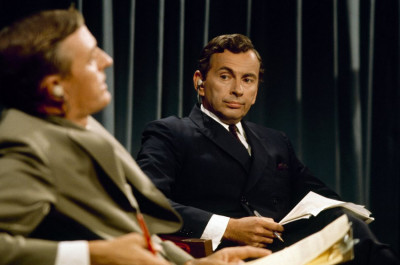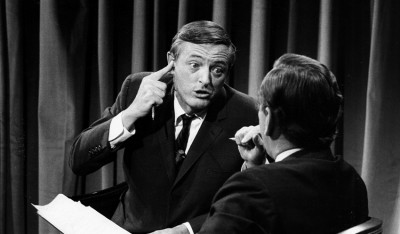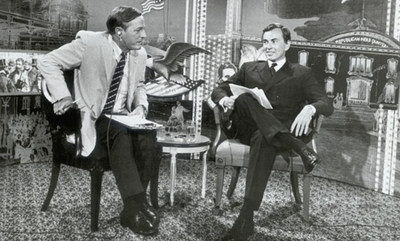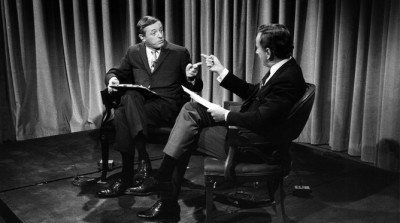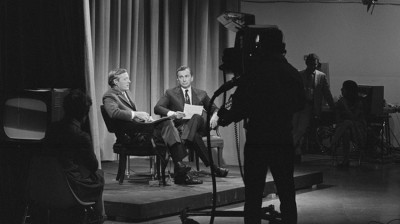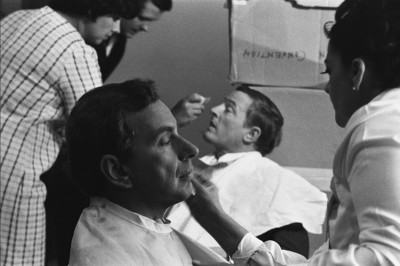The 1968 presidential race forever changed the way television would provide election coverage; not to mention saving a lagging news department at ABC. Dead last in the ratings and unable to provide continuous gavel-to-gavel coverage of both the Democratic and Republican conventions (George Wallace, running as an independent did not have a convention), ABC struck on an idea that, while ludicrous to some, turned out to be one of the greatest Hail Marys in television news – pit the ultra-conservative and extremely well known and well spoken William F. Buckley, Jr. against the outspoken liberal Gore Vidal in what was supposed to be a 90-minute recap of the day’s events at the convention with a discussion on the issues at the center of the candidates’ platforms. What resulted were debates more contentious, more vitriolic, more provocative and more entertaining that anything we have seen on television since. Now, co-directors Morgan Neville and Robert Gordon take the 1968 ABC debate footage along with newsreels and images of the day, supplement the archives with interviews of noted individuals present at the time, and create a fascinating look not only into this chapter of history, but into the driving forces behind Buckley and Vidal and their disdain for each other.
Posturing in Miami Beach at the Republican convention was Richard Nixon, who had approximately 656 delegates votes going into the convention and seemed a shoe-in to garner the remaining 11 necessary to win the nomination. Battling Nixon were Ronald Reagan and Nelson Rockefeller who took the then unique tactic of joining forces to block Nixon. But it was the Democratic Convention in Chicago which grabbed the attention of a nation and divided the Party when thousands of activists from around the country gathered to protest the Vietnam War, culminating in blatant police brutality on August 28th with Chicago police beating anti-war protestors in front of the Hilton Hotel. Ultimately Hubert Humphrey took the nomination. And while it all unfolded, thanks to ABC, the nation was witnessing another kind of battle between Vidal and Buckley.
While I vividly remember those nightly “discussions” (and even at age 10 was enthralled by them), many do not or weren’t even born yet. Now is their chance to see vitriolic verbal sparring at its finest. Forget about the presidential debates we see today, or political and news pundits shooting fiery barbs, Buckley and Vidal go jab for jab for 15 rounds, trying to send each other to the mat.
For myself, and many contemporaries, this was really our first big introduction into politics, debating and the power of words and style; my introduction to the terms “vitriole”, “rhetoric” and “erudite” (still favorite words of mine today). I was enamored with Gore Vidal’s technique and to this day remember him stepping on and talking over Buckley in order to make his voice and point heard. But I also learned about preparation and didn’t realize just how much until watching “Best of Enemies” as Neville and Gordon take us “behind the scenes” with reflective commentary on Vidal’s preparation with the resulting benefits of the element of surprise, and then a counter response from Buckley employing the same techniques. Neville and Gordon show us the true mastery of verbal choreography.
“Best of Enemies” is really the first time all of the puzzle pieces have been brought together, almost as if Neville and Gordon relish the chance to show today’s generation the intellectualism and stylized rhetoric which once permeated politics and news. But what we also see is not only how politics and campaigning changed with the ‘68 elections thanks to these debates, but the social implications of their impact on television and society as a whole.
The cogency and clarity in the construction of the documentary sheds a bright light not only on Vidal and Buckley as individuals and their respective places in history for the young and uninitiated, but puts a mirror to our own current obsession with manipulation of news. This is an origin story in the truest sense of the word; the birth of interpretive news using the television medium, something far more powerful than the print days of Hearst and “yellow journalism.” With the visual analysis of the debates as presented in “Best of Enemies”, we see obfuscation in all its glory as Buckley and Vidal rarely ever addressed the issues or events happening during the conventions. Their gamesmanship became the focus with politics taking a backseat. If there was ever a doubt that ‘68 was a political turning point for America, one look at “Best of Enemies” is all it takes to watch it all unfold. We are given the chance to step back and observe and remove ourselves from the immediacy of the moment, and hopefully reflect on the past and understand the present and make changes for the future.
The narrative design of “Best of Enemies” is well constructed, giving us lengthier excerpts and information with the first debate as a means to set the stage for what would unfold and thus permit more varied content without feeling time pressured in the editing bay. Non-debate news footage and newspaper images keep us well informed as to the heat of the day and mindset of the country. Off-camera narration by John Lithgow and Kelsey Grammer of actual writings of Vidal and Buckley, respectively, is too appropriately delicious for words.
Desperate times call for desperate measures and thanks to ABC’s desperation, the world of television, news and politics changed forever. The chance to bear witness to that through “Best of Enemies” is not to be missed. Electrifying bloodsport at its finest.
Directed by Morgan Neville and Robert Gordon

